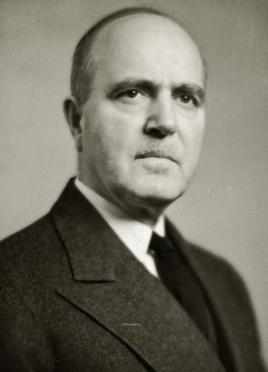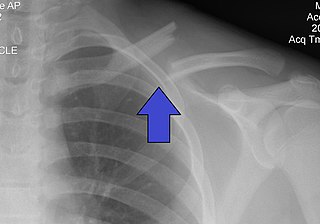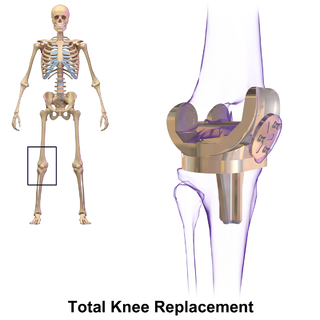
A bunion, also known as hallux valgus, is a deformity of the joint connecting the big toe to the foot. The big toe often bends towards the other toes and the joint becomes red and painful. The onset of bunions is typically gradual. Complications may include bursitis or arthritis.

Shoulder problems including pain, are one of the more common reasons for physician visits for musculoskeletal symptoms. The shoulder is the most movable joint in the body. However, it is an unstable joint because of the range of motion allowed. This instability increases the likelihood of joint injury, often leading to a degenerative process in which tissues break down and no longer function well.
Orthopedic surgery or orthopedics, is the branch of surgery concerned with conditions involving the musculoskeletal system. Orthopedic surgeons use both surgical and nonsurgical means to treat musculoskeletal trauma, spine diseases, sports injuries, degenerative diseases, infections, tumors, and congenital disorders.

Dallas Burton Phemister was an American surgeon and researcher who gave his name to several medical terms. During his career, he was the president of the American Surgical Association and the American College of Surgeons, and was a member of the editorial board of the journal Annals of Surgery.

A clavicle fracture, also known as a broken collarbone, is a bone fracture of the clavicle. Symptoms typically include pain at the site of the break and a decreased ability to move the affected arm. Complications can include a collection of air in the pleural space surrounding the lung (pneumothorax), injury to the nerves or blood vessels in the area, and an unpleasant appearance.
Arthroplasty is an orthopedic surgical procedure where the articular surface of a musculoskeletal joint is replaced, remodeled, or realigned by osteotomy or some other procedure. It is an elective procedure that is done to relieve pain and restore function to the joint after damage by arthritis or some other type of trauma.

Knee replacement, also known as knee arthroplasty, is a surgical procedure to replace the weight-bearing surfaces of the knee joint to relieve pain and disability, most commonly offered when joint pain is not diminished by conservative sources and also for other knee diseases such as rheumatoid arthritis and psoriatic arthritis. In patients with severe deformity from advanced rheumatoid arthritis, trauma, or long-standing osteoarthritis, the surgery may be more complicated and carry higher risk. Osteoporosis does not typically cause knee pain, deformity, or inflammation and is not a reason to perform knee replacement.

A separated shoulder, also known as acromioclavicular joint injury, is a common injury to the acromioclavicular joint. The AC joint is located at the outer end of the clavicle where it attaches to the acromion of the scapula. Symptoms include non-radiating pain which may make it difficult to move the shoulder. The presence of swelling or bruising and a deformity in the shoulder is also common depending on how severe the dislocation is.
Shoulder surgery is a means of treating injured shoulders. Many surgeries have been developed to repair the muscles, connective tissue, or damaged joints that can arise from traumatic or overuse injuries to the shoulder.

The Weaver–Dunn procedure is a generally successful type of surgery involved in the treatment of severe separated shoulders developed by James K. Weaver, M.D., Albuquerque, New Mexico, and Harold K. Dunn, M.D., Salt Lake City, Utah, in the early 1970s.

An osteoid osteoma is a benign (non-cancerous) bone tumor that arises from osteoblasts and some components of osteoclasts. It was originally thought to be a smaller version of an osteoblastoma. Osteoid osteomas tend to be less than 1.5 cm in size. The tumor can be in any bone in the body but are most common in long bones, such as the femur and tibia. They account for 10 to 12 percent of all benign bone tumors and 2 to 3 percent of all abnormal bone growths. Osteoid osteomas may occur at any age, and are most common in patients between the ages of 4 and 25 years old. Males are affected approximately three times more commonly than females.
A child bone fracture or a pediatric fracture is a medical condition in which a bone of a child is cracked or broken. About 15% of all injuries in children are fracture injuries. Bone fractures in children are different from adult bone fractures because a child's bones are still growing. Also, more consideration needs to be taken when a child fractures a bone since it will affect the child in his or her growth.
David Marsh Bosworth was an American orthopedic surgeon and medical educator. He is remembered for describing the Bosworth fracture.
Dr. John F. Sarwark is Martha Washington Foundation Professor of Pediatric Orthopedics at Lurie Children's Hospital; Former Head, Pediatric Orthopedic Surgery, Lurie Children's Hospital; and Professor of Orthopaedic Surgery, Northwestern University's Feinberg School of Medicine in Chicago, Illinois.
John H. Healey is an American cancer surgeon, researcher, and expert in the surgical treatment of benign and malignant bone tumors and other musculoskeletal cancers. He serves as Chair of the Orthopaedic Service and Stephen P. McDermott Chair in Surgery at Memorial Sloan-Kettering Cancer Center (MSKCC), as well as Professor of Surgery at Weill Cornell Medical College, in New York, NY.
The Mumford procedure, also known as distal clavicle excision or distal clavicle resection, is an orthopedic procedure performed to ameliorate shoulder pain and discomfort by excising the distal (lateral) end of the clavicle. Those suffering from osteoarthritis in the acromioclavicular joint can opt for this procedure when non-surgical alternatives are unsuccessful. The surgery can be performed through an open or arthroscopic procedure. A regimen of physical therapy following surgery is prescribed and most patients experience full recovery within 8 to 10 weeks post-surgery. The procedure was created by, and named for, orthopedic surgeon Eugene Bishop Mumford in 1941.
Ashok Rajgopal is an Indian orthopaedic surgeon, credited with close to 20,000 Arthroscopic and over 35,000 Total Knee Arthroplasty surgeries and reported to be one of the most experienced in his field in India. He was honoured by the Government of India in 2014, by bestowing on him the Padmashri, the fourth highest civilian award, for his services to the fields of orthopaedic surgery. He has also been awarded the Dr. BC Roy award by the Medical Council of India to "Recognize the Best Talents in Encouraging the Development of Specialties in Different Branches in Medicine" for 2014.
Joseph D. Zuckerman is an American orthopedic surgeon specializing in shoulder, hip and knee replacement surgery.
Raymond Rocco Monto, M.D. is a Board Certified orthopaedic surgeon with a practice on Nantucket, Massachusetts. Monto's work includes developments in sports medicine, Tennis elbow surgery, hip arthroscopy, platelet-rich plasma, and innovative orthobiologic treatments for chronic disorders including Achilles tendonitis and plantar fasciitis. Monto lectures frequently in the United States and around the world.








